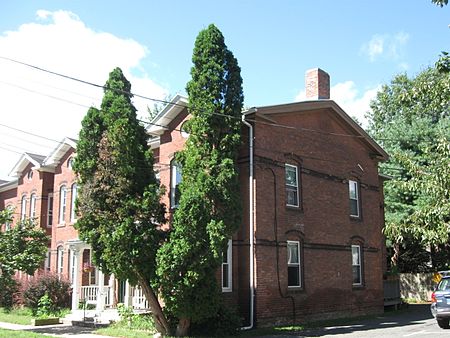Building at 8–22 Graves Avenue
Buildings and structures in Northampton, MassachusettsNational Register of Historic Places in Hampshire County, MassachusettsResidential buildings on the National Register of Historic Places in Massachusetts

The Building at 8–22 Graves Avenue is a historic rowhouse just outside the downtown area of Northampton, Massachusetts. The Queen Anne style brick rowhouse was built in 1887 for Doctor Silas R. Cooley. The property is unusual because brick was not then a common building material for housing in the Connecticut River valley, and because the rowhouse style of construction was also rare in the area. The building was listed on the National Register of Historic Places in 1985.
Excerpt from the Wikipedia article Building at 8–22 Graves Avenue (License: CC BY-SA 3.0, Authors, Images).Building at 8–22 Graves Avenue
Graves Avenue, Northampton
Geographical coordinates (GPS) Address Nearby Places Show on map
Geographical coordinates (GPS)
| Latitude | Longitude |
|---|---|
| N 42.321944444444 ° | E -72.628888888889 ° |
Address
Graves Avenue 8;10;12;14;16;18;20;22
01060 Northampton
Massachusetts, United States
Open on Google Maps










